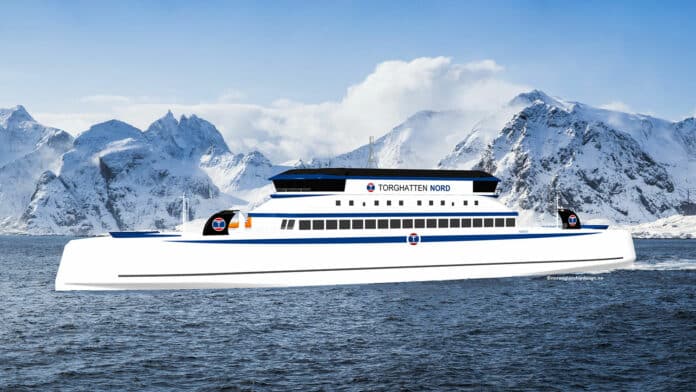Swedish company PowerCell has signed an agreement with Norwegian SEAM to provide hydrogen solutions to two ships that operate on Norway’s longest ferry connection.
This massive project, valued at nearly €19.2 million ($20.4 million), claims to be the world’s largest hydrogen project to date in the marine industry. It is also an important climate project that significantly reduces CO2 emissions.
SEAM, a technology company specializing in zero-emission alternatives for the maritime industry, is responsible for the delivery of propulsion, control, and safety systems. And the fuel cell for the powertrain will be supplied by PowerCell. The final delivery is to take place in the fourth quarter of 2024.
The Norwegian government has decided that all new ferries across the Vestfjorden at Lofoten should be emission-free. In addition, they must be powered by hydrogen to cover the long and demanding distances of up to four hours.
Torghatten Nord, the Norwegian transport group, will deliver the ferries, which have a capacity of 599 passengers, 120 cars, and twelve trucks each. Considering this, the future Torghatten Nord ferries require a powerful propulsion system.
Torghatten Nord and PowerCell also intend to enter into a long-term service agreement. PowerCell will deliver its Marine System 200, which enables the ferries to produce approximately 13 MW of power in total. The ferries are powered by green hydrogen and reduce CO2 emissions by 26,500 tonnes per year. This is equivalent to the CO2 emissions from 13,000 diesel cars per year, according to the route operator.
“This is a groundbreaking project for the entire marine industry that we are very happy to be part of,” says Richard Berkling, CEO of PowerCell. “Norway led the development in the introduction of liquefied natural gas in the marine industry, and now they are taking an important step to establish green hydrogen as the energy source to decarbonize commercial marine operations. Our solutions are perfectly suited for demanding applications where operational reliability, high power density, and compact format are important parameters.”
“The transition to electrification and emission-free energy is accelerating and is supported by supranational initiatives such as the EU’s Green Deal and the large-scale investments to reach the Paris Agreement,” continues Richard Berkling. “In Norway alone, there are roughly 800 ferry lines, and ferries are a segment where we can expect great interest in hydrogen-electric solutions. Starting next year, the maritime sector will be included in the EU Emissions Trading System, which will increase the demand for net zero, hydrogen-powered solutions.”
“This groundbreaking hydrogen project is an important step towards ensuring zero emissions in the Norwegian ferry fleet, and we are very pleased to have PowerCell onboard,” says Gunvald Mortvedt, CEO of SEAM. “Our collaboration with PowerCell is a strategically important and long-term partnership. We have great confidence in their solutions and are looking forward to working with them on both current and future projects.”
